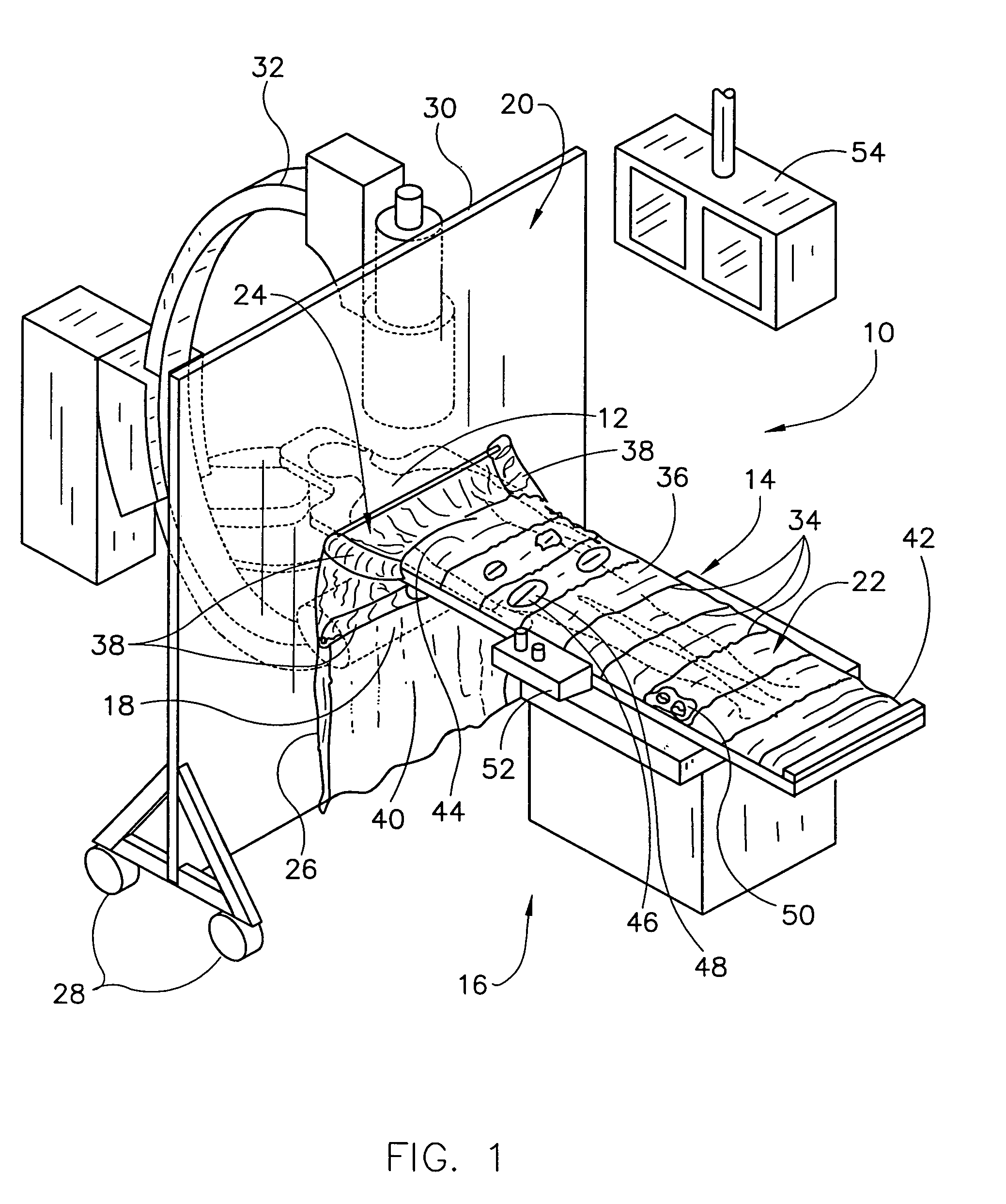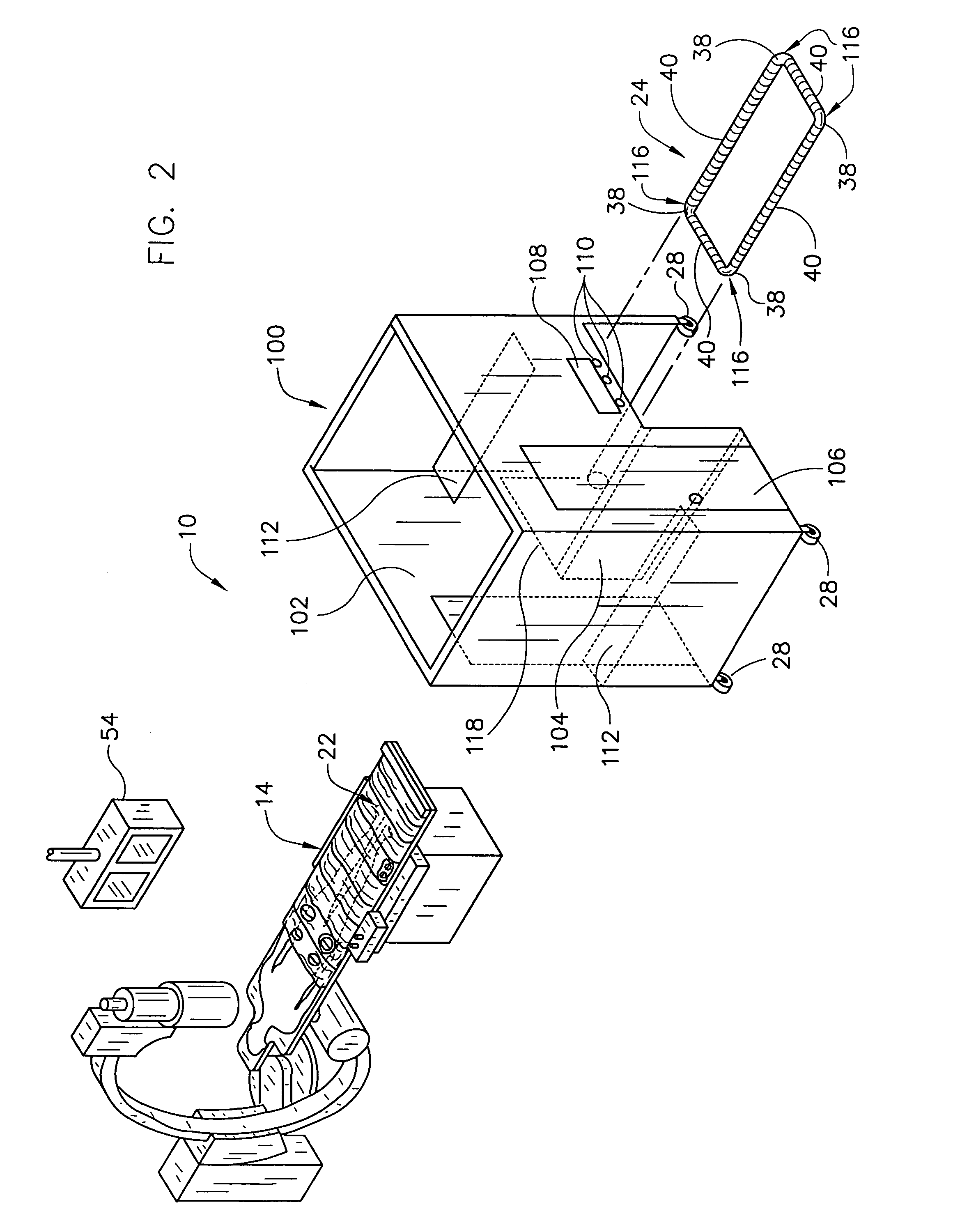Radiation protection system
a radiation protection system and radiation protection technology, applied in the field of radiation protection systems, can solve the problems of medical personnel still exposed to radiation, adverse effects, and exposure to radiation by such personnel
- Summary
- Abstract
- Description
- Claims
- Application Information
AI Technical Summary
Benefits of technology
Problems solved by technology
Method used
Image
Examples
second embodiment
[0032]FIG. 4 illustrates that these embodiments use much the same system for shielding operators and other medical personnel 114 from the x-ray emitter 18 and x-ray scattering when working in the personnel region 16 adjacent to the patient 12 on the x-ray table 14. In particular, operators are shielded from most x-ray radiation by isolating the personnel region 16 from the x-ray emitter 18 with the radiation-shielding wall 102 and the radiation-shielding flexible interface 24, covering the patient with a radiation-shielding screen 22 adjacent to the personnel region, and joining the wall 102 and the screen 22 with the flexible interface 24. The wall 102 and the flexible interface 24 isolate the personnel region 16 from the x-ray emitter 18. The flexible interface 24 attaches the x-ray table 14 to the wall 20, 102 through flexible joints 38, 116 and joins the screen 22 to the wall 20, 102 through a flexible radiation-resistant skirt 40. The second embodiment further isolates the oper...
first embodiment
[0049]As various modifications could be made in the constructions and methods herein described and illustrated without departing from the scope of the invention, it is intended that all matter contained in the foregoing description or shown in the accompanying drawings shall be interpreted as illustrative rather than limiting. For example, the wall 20 in the first embodiment can be curved or hinged to partially surround the operating region 16. As another example, the cubicle 100 can be wider to extend over the foot 42 of the x-ray table 14, thereby enlarging the operating region 16 within the cubicle 100. Thus, the breadth and scope of the present invention should not be limited by any of the above-described exemplary embodiments, but should be defined only in accordance with the following claims appended hereto and their equivalents.
PUM
 Login to View More
Login to View More Abstract
Description
Claims
Application Information
 Login to View More
Login to View More - R&D
- Intellectual Property
- Life Sciences
- Materials
- Tech Scout
- Unparalleled Data Quality
- Higher Quality Content
- 60% Fewer Hallucinations
Browse by: Latest US Patents, China's latest patents, Technical Efficacy Thesaurus, Application Domain, Technology Topic, Popular Technical Reports.
© 2025 PatSnap. All rights reserved.Legal|Privacy policy|Modern Slavery Act Transparency Statement|Sitemap|About US| Contact US: help@patsnap.com



